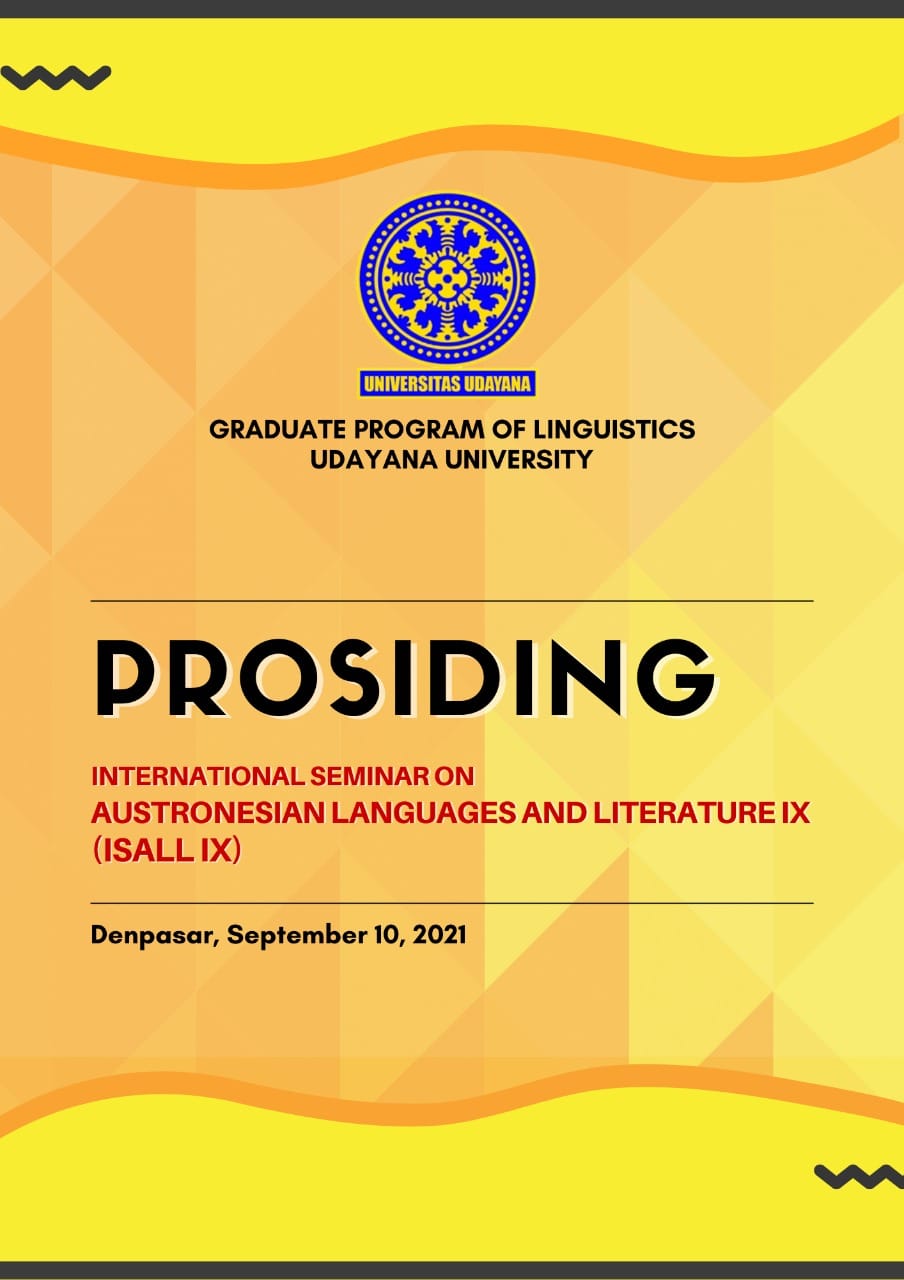The Use of Word “Oe” in Naming Place in Kupang City: Cultural Linguistics Perspective
Abstract
This article is intended to investigate about the use of word “Oe” in naming place in Kupang city. Furthermore, this article applied two (2) theories. The first theory is cultural linguistic perspective as the core theory and the second theory is morphology as the supporting theory. Obviously, this article applied qualitative research method. Based on the data analysis, it can be concluded that (1). From 51 districts and sub districts in Kupang City, there are ten (10) places (district and sub district) which used the word “Oe” before the name of the place. They are Oesapa, Oesapa Barat, Oesapa Selatan, Oeleta, Oeba, Oepura, Oebobo, Oetete, Oebufu, and Oebobo. (2). The morphological process system in naming place in Kupang city by using the word “ Oe” is “Oe” + Noun suffix (the name of the place). It means that the pattern of morphological process in naming place by using word “Oe” is Noun (N) ? N. Suffix ? Noun (N). (3). The culture imagery of Kupang speech community believes that the water becomes the important thing in their life. Therefore, they give the name of their place by using word “Oe”, in order that they will get sufficient water sources around their living environment
References
Erom, Kletus. (2019). Sistem penamaan masyarakat Manggarai: studi kasus dalam perspektif linguistik kebudayaan. Jurnal Pendidikan Bahasa dan Sastra, Vol. 19(1), 72-85
Erfiani, Yohanes P. F. (2015). Covariation of Morphology and Methaphor in Manggarai Language: Cultural Linguistics Perspective. Jurnal Ilmiah Sosio-Sains, Vol. 8 (8), 12-33.
Erfiani, Yohanes P. F. (2018). A Study Methaphors in Ti’I Ka Embu Nusi Discourse in Rongga Language. Jurnal Pendidikan Bahasa dan Sastra, Vol. 18 (1), 123- 135.
Haspeltmath, Martin. (2002). Understanding Morphology. London: Arnold.
Jufrizal. (2018). Anthropological Linguistics; An Introduction for Beginner. Yogyakarta: Graha Ilmu.
MacCarthy, Andrew, Carstair. (2002). An Introduction to English Morphology: Words and Tehir Structure. Edinburgh: Edinburh University Press.
Moleong, Lexy. J. (2017). Memahami Penelitian Kualitatif. Bandung: PT Remaja Rosdakarya.
Muslich, Masnur. (2009). Tata Bentuk Bahasa Indonesia (Kajian Ke Arah Tatabahasa Deskriptif). Jakarta: Bumi Angkasa.
Palmer, G. B. (1996). Toward a Theory of Cultural Linguistics. USA: University of Texas Press.
Perry, Jr. Fred L. (2005). Research in Applied Linguistics: Becoming a Discerning Consumer. New Jersey: Lawrence Erlbaum Associates Publishers.
KBBI, (2020). Kamus Besar Bahasa Indonesia (KBBI). [Online, diakses tanggal 10 Agustus 2021].
Sugiyono. (2009). Memahami Penelitian Kualitatif. Bandung: Alfabeta.
Wedasuwari, Ida Ayu Made. (2020). “Kajian Literatur: Bahasa, Budaya dan Pikiran dalam Linguistik Antropologi”. Wacana, 20 (1), 1-7.


